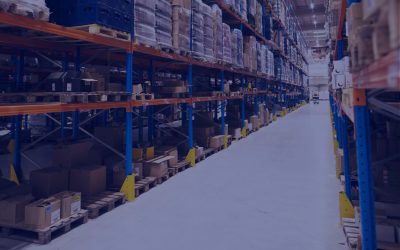OpenAI’s arrival in Patagonia, Argentina, backed by a US$25 billion investment, marks a turning point for the region’s technological development.
Artificial intelligence is no longer a distant concept. It has become an industry with physical infrastructure, defined stakeholders, and measurable investments. One of the most high-profile moves in Latin America to date has just taken place in Argentina. OpenAI, the company behind ChatGPT, announced a proposed US$25 billion investment alongside Sur Energy, owned by Argentine entrepreneur Emiliano Kargieman, to establish an AI center in Patagonia.
The initiative began a year ago during meetings between OpenAI executives and Argentine government officials. After several rounds of discussions, including one attended by President Javier Milei, the project progressed to a signed letter of intent between OpenAI and Sur Energy to develop a large-scale data center with up to 500 MW of capacity. OpenAI CEO Sam Altman refers to these facilities as Stargates, and the Argentine site would be the first of its kind in the region.
“This milestone goes beyond infrastructure. It’s about putting artificial intelligence in the hands of people across Argentina,” said Altman in a video released after the announcement. The vision behind Stargate is to build the next generation of AI infrastructure while also creating economic and social impact. The center in Patagonia will operate under the RIGI framework (Incentive Regime for Large Investments), which is designed to accelerate the inflow of capital and advanced technology.
Beyond installing data centers and computing clusters, a project of this scale also involves deploying specialized hardware, including GPUs, servers, networking equipment, and storage systems. These components require international transport, customs clearance, and secure domestic distribution in a country still adapting its regulations to support this kind of industry.
Dan Zonnenschein, COO at Aerodoc Inc, puts it clearly: “The rapid advancement of artificial intelligence is triggering a new wave of demand for logistics and importation solutions.”
According to Zonnenschein, many companies involved in this AI revolution are not prepared to manage the regulatory and operational burdens of cross-border shipping. “Many companies involved in AI development either lack a legal entity in the countries they want to operate in, or are not ready to manage complex importation processes,” he says. “That’s where Aerodoc comes in: we are a technology-focused Importer of Record, and we’re ready to support them.”
Aerodoc, Your Strategic Logistics Partner
Aerodoc delivers concrete solutions for importing and transporting GPUs, AI hardware, and other key components of technological infrastructure.

Argentina and Latin America are expected to experience a surge in AI deployment, echoing trends already underway in other regions. As Carolina Muller, VP of Business Development, noted: “The global boom in artificial intelligence has triggered a spike in GPU demand.”
Muller also highlighted the logistical risks involved: “GPUs are high-value units classified as dual-use goods and subject to strict export controls. Moving them across borders with incomplete documentation or without meeting regulatory requirements can lead to customs delays and result in substantial financial losses.”
In the face of complex customs regulations, Aerodoc serves as an Importer of Record (IOR) and delivers Delivery Duty Paid (DDP) services that cover duties, taxes, customs clearance, and door-to-door delivery.
Aerodoc also provides White Glove Delivery, including specialized handling of sensitive equipment. The company also has proven experience as a logistics partner for businesses entering Argentina without local infrastructure, managing the entire process from point of origin to final installation.
Latin America at the Center of the AI Map
While still trailing the United States, Europe, and Asia, Latin America is showing clear signs of a rapidly accelerating AI ecosystem.
“We’re seeing consistent growth in data center projects across Latin America,” Zonnenschein notes. And the trend is only intensifying. “Since the second half of the year, the demand for IOR services has increased significantly throughout the region.”
According to a recent report, the Latin American data center market was valued at US$7.16 billion in 2024 and is projected to reach US$14.30 billion by 2030, representing a compound annual growth rate (CAGR) of approximately 12.2%.
Brazil, in particular, is leading this boom and serves as the regional epicenter. In 2024, the country’s IT capacity (server and network load) reached approximately 356 MW, with nearly 77% concentrated in the São Paulo area. Additionally, Brazilian authorities recently approved 359 MW of new data center capacity in São Paulo through authorized power connections valid until 2032. Brazil’s appeal is further strengthened by its integration of renewable energy sources and government policies that support this sector.

Mexico is also gaining ground, driven by nearshoring, with the state of Querétaro accounting for over half of the country’s data center activity. Chile has also emerged on the radar, thanks to Santiago’s cool climate and the availability of renewable energy, attracting investments from companies like Google and Microsoft.
While the region still lags behind the world’s major technology hubs, the growth trajectory and country-specific advantages are prompting more companies to consider Latin America as a viable option for infrastructure expansion.
In this context, Argentina has made a bold move. With the investment from OpenAI and Sur Energy, the country enters the race to become a regional AI hub. This opens up a chain of opportunities that go far beyond software development. Every stage demands logistics expertise, regulatory compliance, the import of advanced technology, and a reliable distribution network.
If you’re looking for a logistics partner to bring critical AI infrastructure into Argentina or elsewhere in the region, please complete the form bellow and contact Aerodoc’s team of experts.
Q&A
- What are the key requirements for a country to become a logistics hub for AI in Latin America? It must offer advanced digital infrastructure, streamlined regulatory frameworks for tech imports, and access to renewable energy. Strategic location and strong logistics connectivity are also critical to support scalable AI deployments.
- What are the main logistical challenges in establishing a logistics hub for AI in emerging markets? These include complex customs procedures, limited infrastructure for high-value equipment, and strict export compliance requirements. Overcoming them requires logistics partners with IOR, DDP services, and proven expertise in AI hardware.
- How can a logistics hub for AI accelerate regional AI adoption? By enabling the swift importation of critical hardware like GPUs and servers, it shortens deployment timelines and boosts local computing capacity—catalyzing broader AI accessibility and ecosystem growth.
- What role do White Glove services play in a logistics hub for AI? They ensure secure, expert handling of sensitive equipment, reducing risks of damage or installation delays. These services are essential for maintaining operational integrity in data centers and AI clusters.




